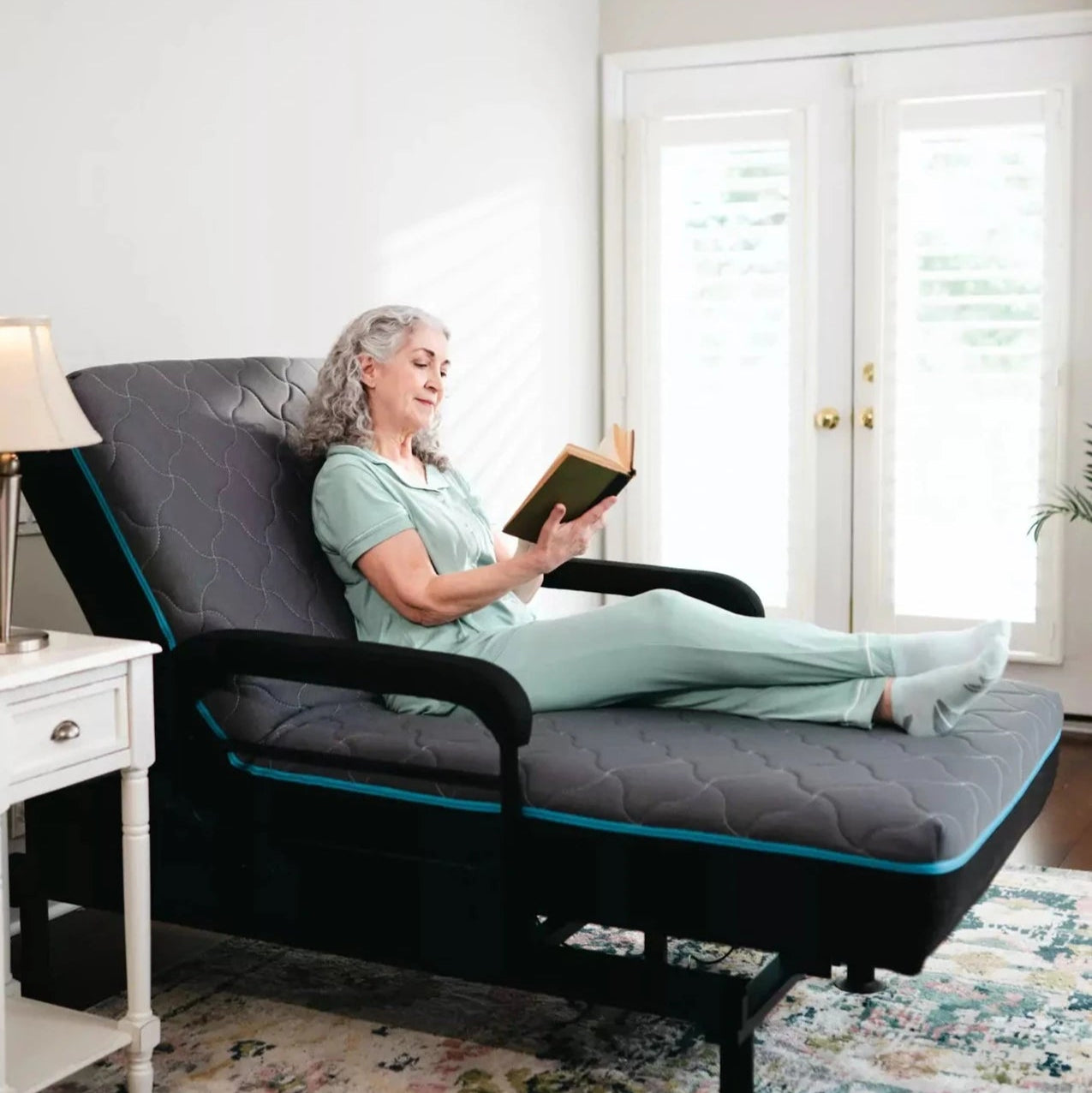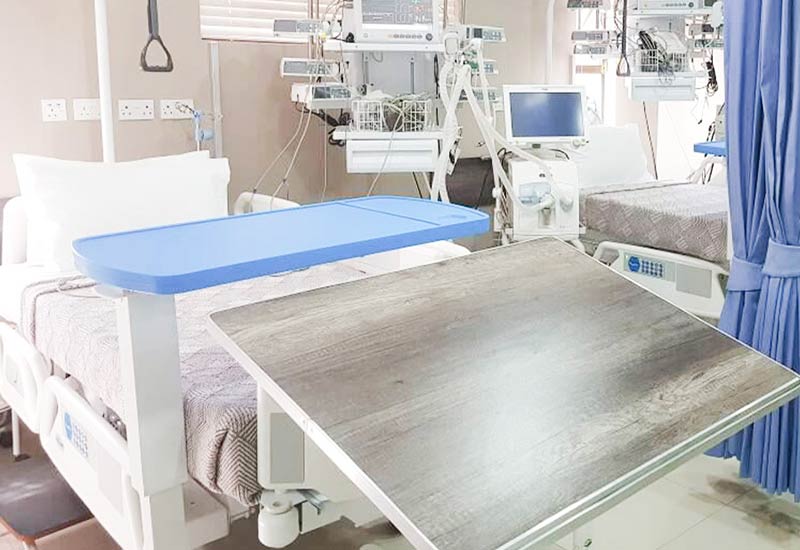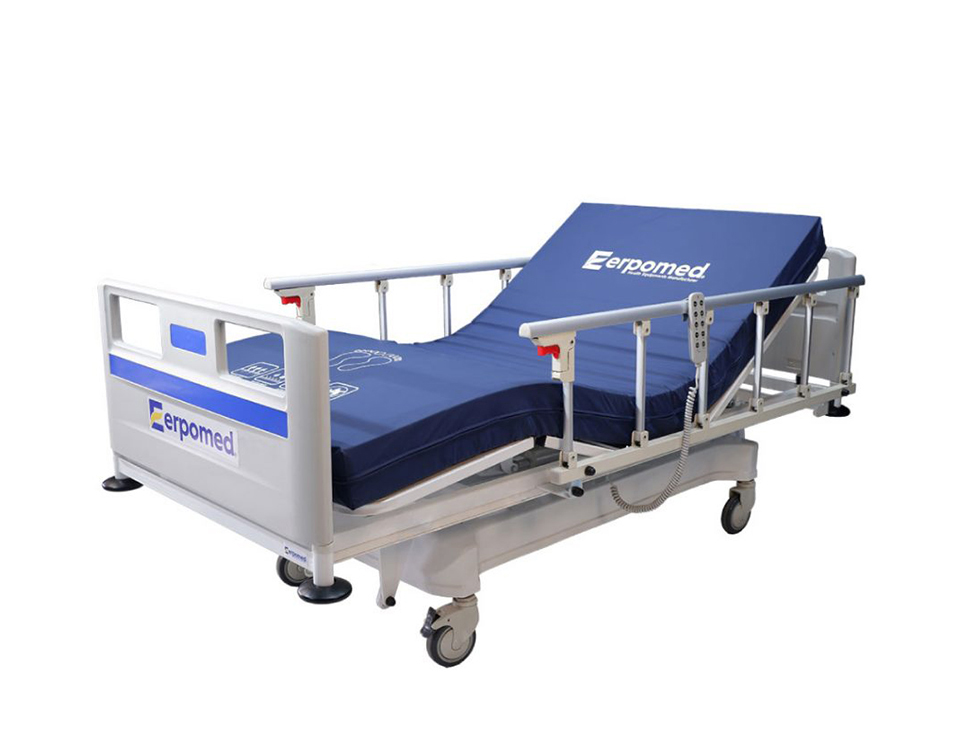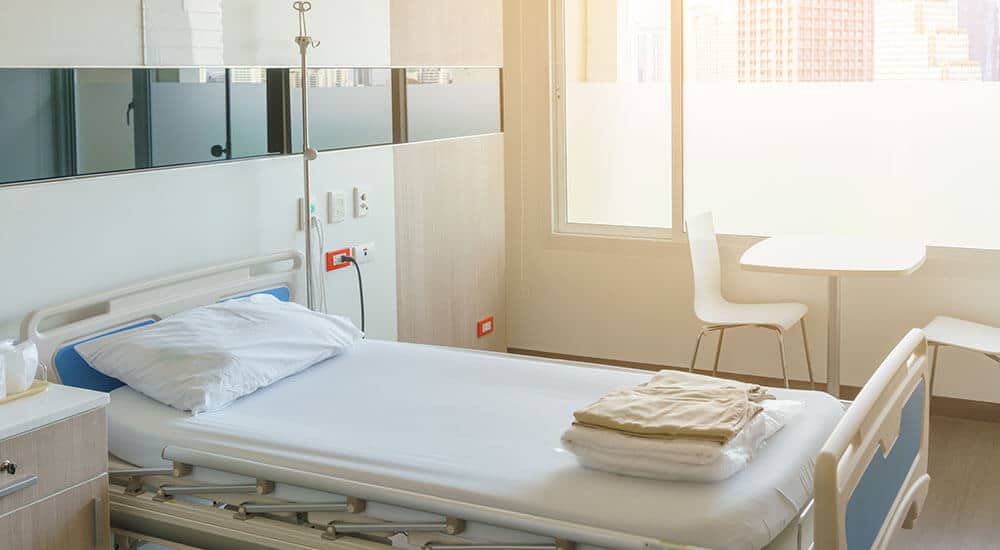Hospital Beds For Home Use for Dummies
Hospital Beds For Home Use for Dummies
Blog Article
Hospital Beds For Home Use Can Be Fun For Anyone
Table of ContentsFascination About Hospital Beds For Home UseHospital Beds For Home Use - QuestionsHow Hospital Beds For Home Use can Save You Time, Stress, and Money.A Biased View of Hospital Beds For Home UseHow Hospital Beds For Home Use can Save You Time, Stress, and Money.Not known Facts About Hospital Beds For Home UseLittle Known Questions About Hospital Beds For Home Use.
There are three major types of hospital beds: handbook, semi-electric, and fully-electric. Nonetheless, even more kinds of medical beds exist and they are listed here. These beds utilize hand cranks to adjust the bed's elevation and increase and lower the head and the foot. Hand cranks are usually found at the foot of the bed and call for a person that is literally with the ability of operating.
Semi-electric beds have an electric motor to elevate and lower the head and foot parts of the bed. Individuals and caregivers adjust the placing by pushing buttons using a hand necklace. The height of the bed is changed by hand with a hand crank. Full-electric beds have an electrical motor that can raise the head and foot sections of the bed in addition to the whole elevation and positioning of the bed.
Not known Facts About Hospital Beds For Home Use
Some versions can additionally relocate right into even more settings, such as the Trendelenburg (tilt) position. There are a number of types of hospital beds, each made to satisfy specific individual needs. Right here are some usual kinds: This is the most usual type of hospital bed, developed for basic clinical use. It has a guidebook or electrically flexible headrest, footrest, and elevation.
Reduced to the ground than a typical bed. This kind of bed is designed for larger clients, with a broader frame and greater weight capacity than a typical bed.
This type of bed is designed for seriously sick clients that require open surveillance and specialized medical tools such as ventilators and infusion pumps. This kind of bed is developed for use during labor and delivery, with adjustable placements and attributes to sustain the mom and infant throughout the birth process.
Not known Incorrect Statements About Hospital Beds For Home Use
Several function and the accessories carry out increasing grip to different components of the vertebra and the extremities without relocating the body. These are just a couple of instances of the kinds of healthcare facility beds readily available. The specific kind of bed used will rely on the client's condition, medical demands, and various other elements.
Below is the important things you need to recognize. A one-function health center bed is a medical bed that permits a patient to relocate only the head or foot section up or down. A 2 function hospital bed usually describes a kind of medical bed that has two flexible features to help patients in healthcare facilities or care centers.

More About Hospital Beds For Home Use
A 7-function ICU bed is a type of clinical bed that supplies numerous flexible features to support seriously sick individuals in an intensive treatment device (ICU) (hospital beds for home use). The 7 features usually consist of: Backrest adjustment: The backrest can be readjusted to different angles to aid the patient sit up or relax conveniently
Elevation adjustment: The bed can be raised or reduced to make it easier for people to enter and out of bed, and for caretakers to supply care. Trendelenburg setting: The whole bed can be tilted to advertise blood circulation and circulation in the body. Reverse Trendelenburg position: The bed can likewise be tilted in the contrary direction to advertise blood flow and flow in the top body.
1. What Size is a Health Center Bed? 2. Just how much Does a Health Center Bed Cost? 3. Why Do Medical Facility Beds Have Side Rails? 4. What Are The Main Healthcare Facility Bed Components?. While even more inexpensive than electric designs, these beds require physical initiative for modifications. The primary advantages of hands-on beds are their affordability and reliability, as they don't depend on power. The requirement for hand-operated initiative can be a constraint in situations where fast changes are required or where caretakers encounter physical challenges.
See This Report on Hospital Beds For Home Use
They are well-suited for clients who call for very little rearranging for convenience or medical requirements. Semi-electric medical facility beds supply an equilibrium of handbook and electrical controls. The head and foot areas are normally changed with electrical controls, while the elevation is changed manually. These beds link provide an excellent happy medium in between handbook and completely electrical choices, offering ease of usage without the full expense of electrical designs.
Semi-electric beds are well-suited for clients who require moderate adjustments to the head and foot areas yet can handle without frequent height changes. This makes them a cost-effective remedy for those looking for comfort review and convenience without the demand for continuous repositioning. Completely electric healthcare facility beds feature electric controls for seamless modifications to the elevation, head, and foot sections.
Specialty medical facility beds, such as ICU beds, lasting care beds, and bariatric beds, are meticulously made to resolve certain clinical needs. These beds provide tailored look after varied person groups, improving both outcomes and comfort. In the adhering to areas, we will certainly check out the main kinds of specialized healthcare facility beds, describing their certain benefits and applications.
With years of experience in manufacturing electric straight actuators - hospital beds for home use and close partnership with the health care sector, TiMOTION is well-positioned to give trustworthy healthcare options. Our vertically incorporated company takes care of every action of the production procedure, from style to actuator assembly, guaranteeing we deliver phenomenal value and tailored options tailored to your certain requirements
The Main Principles Of Hospital Beds For Home Use

To get more information regarding integrating these technologies into your products, call us today. Further reading:.
Data is sourced from see here now the Medicare Expense Record. Accessed January 2025. Temporary severe care medical facilities have the greatest typical number of beds at 187. They are the most usual sort of medical facility in the U.S. and make up greater than 50% of U.S. health centers. Children's health centers have 178 beds on standard and VA hospitals ordinary 175 beds.

Our Hospital Beds For Home Use Ideas
A health center bed is a bed made specifically for clinical objectives. It is not only an area for clients to rest, but also a system for medical procedures. Unlike ordinary home beds, healthcare facility beds typically have adjustable attributes, which can assist in medical team to make various changes according to the needs of individuals, such as changing the height, inclination, and support angle of the back and legs of the bed.
Report this page